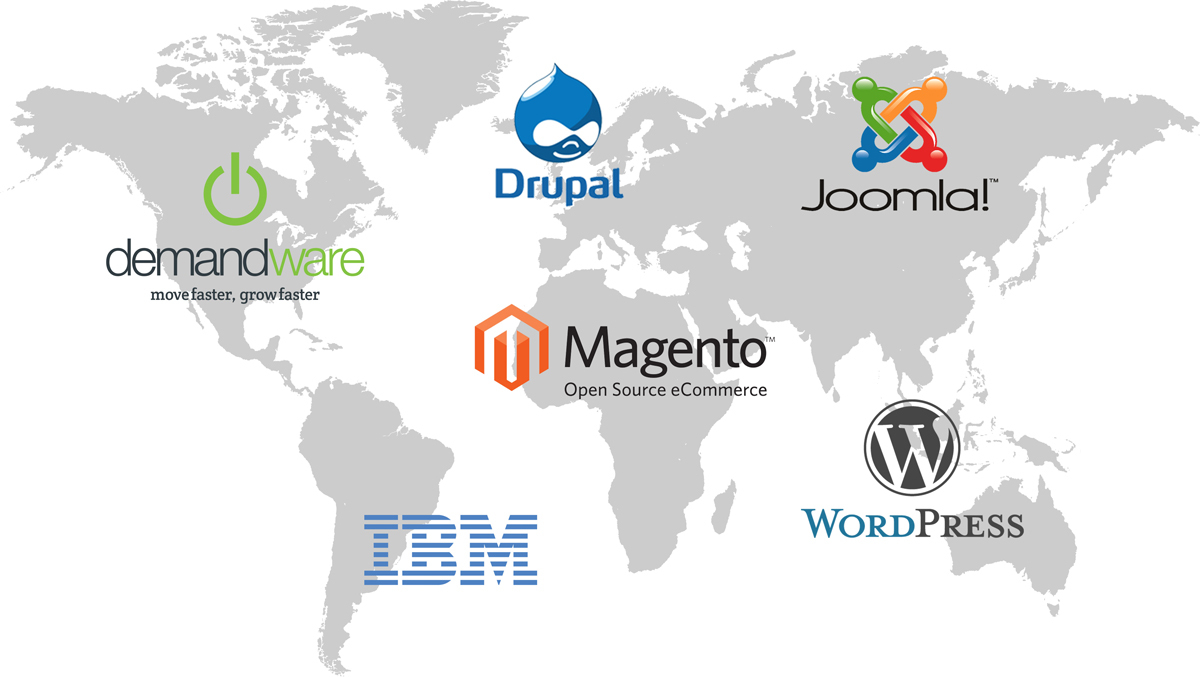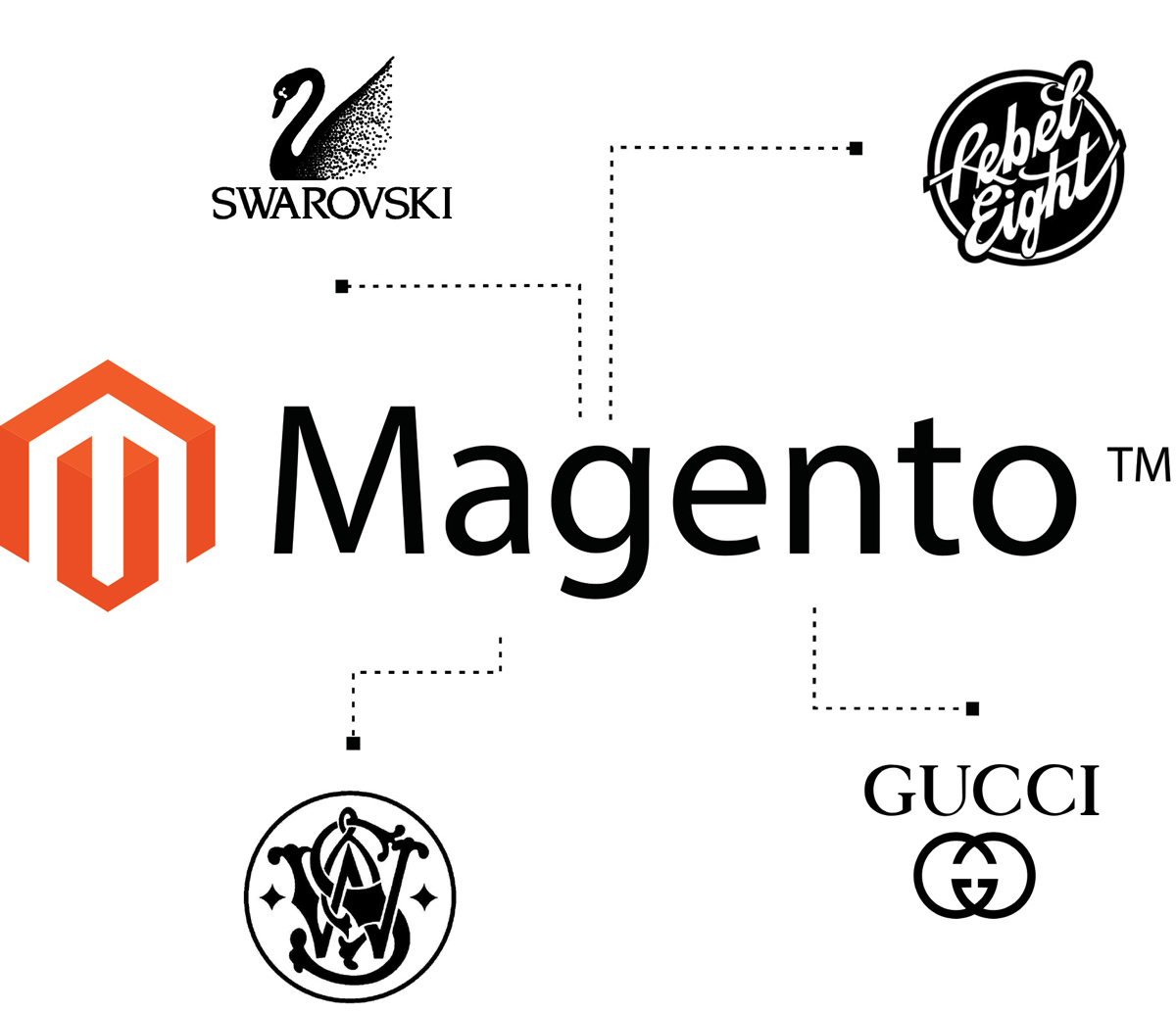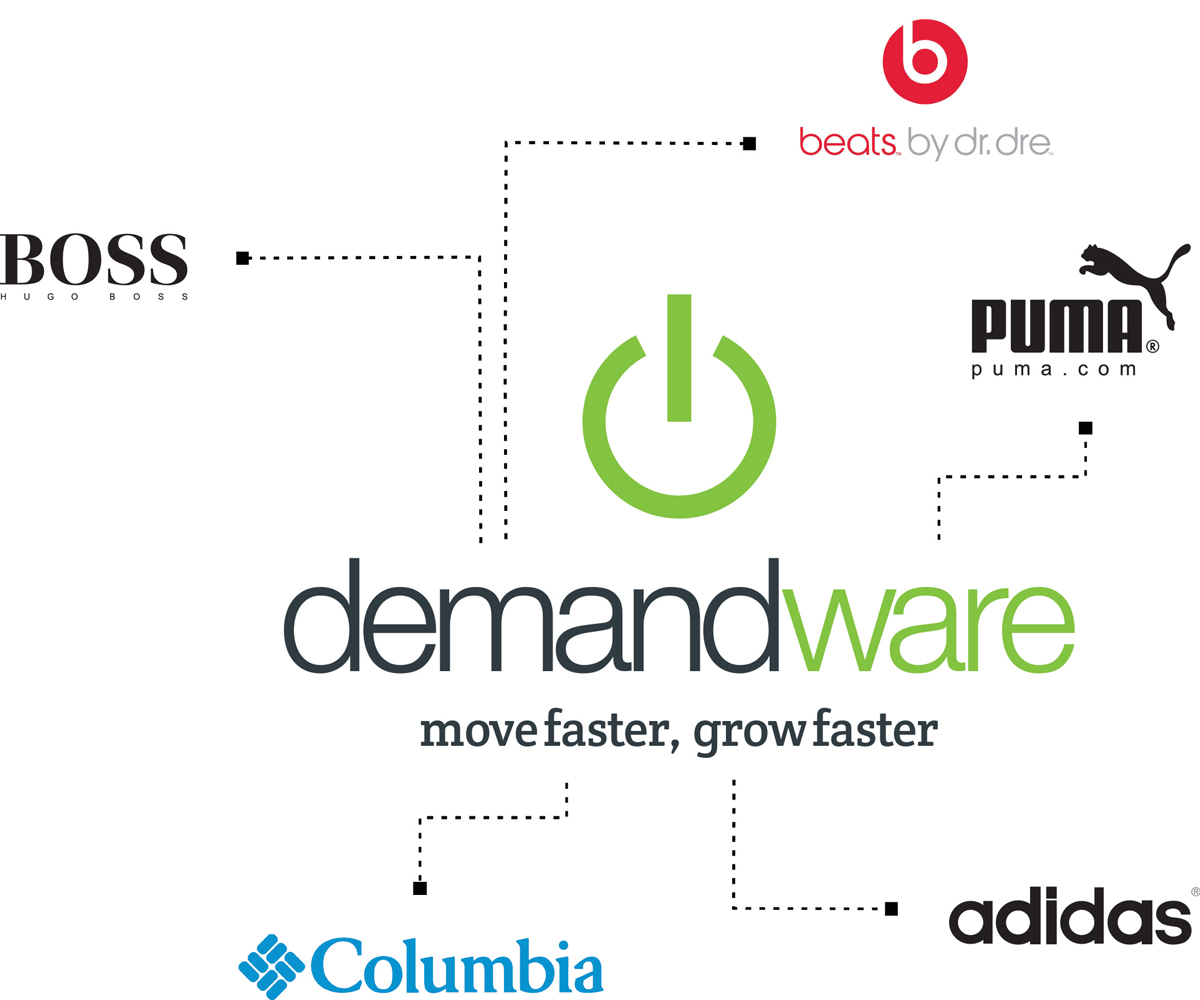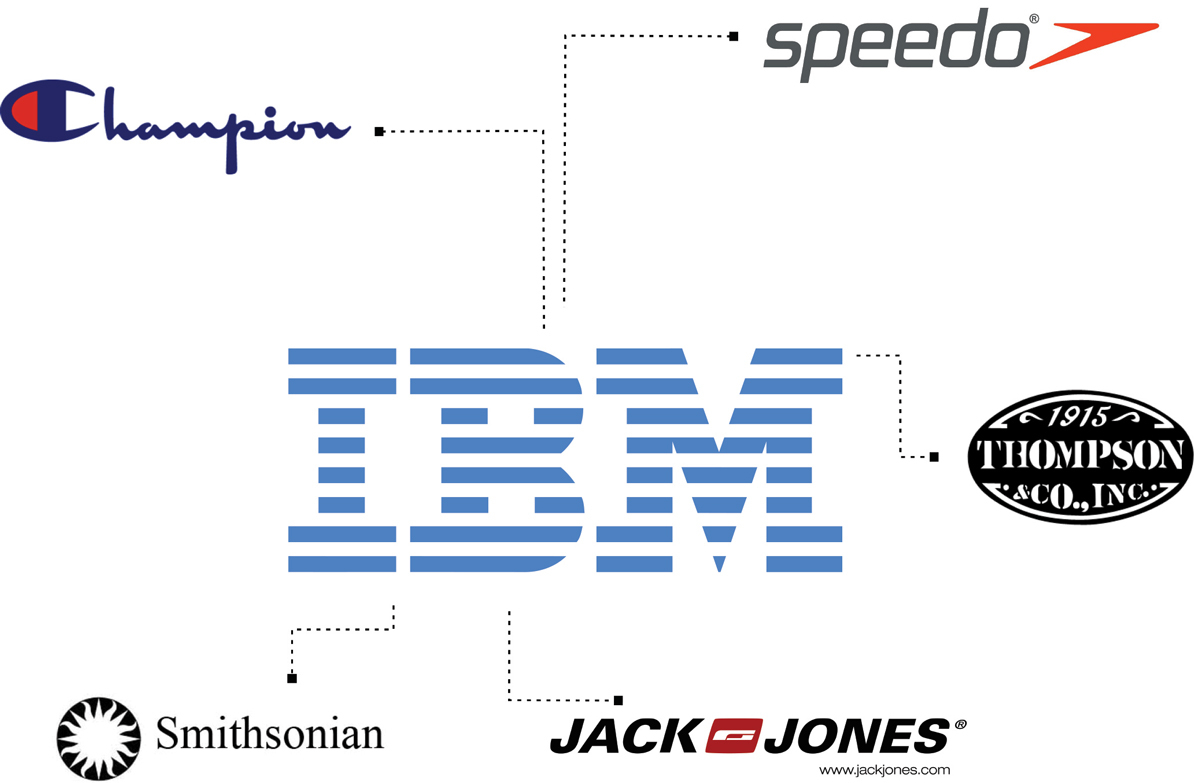E-commerce platform. Introduction. Part 1
It’s no secret to anyone that global sales on the Internet are growing inexorably from year to year. Online trading currently accounts for just over 5% of global trade. Just imagine, every twentieth dollar spent on purchases is spent online. Such a situation simply forces owners of not only large, but also medium and small businesses to go out with their goods to the World Wide Web. And here the question arises: how to get to the e-commerce market? One of the main components of this issue is the choice of platform for the future online store. After all, there are quite a few such platforms, so how to determine which one is more suitable for specific needs? Let's try to figure this out together using several systems as an example.

Let's start withThe WordPress . This PHP platform is now the most popular CMS. WordPress is ideal for beginners of site building, thanks to its good documentation and quick installation. It is worth noting that WordPress is already very widespread, ranging from blogs to e-commerce sites. The market share of this CMS is 60.3%, which is an impressive indicator. Such popularity is due to a wide range of plugins, widgets for galleries, multilingualism, ease of administration. But at the same time, the functionality of WordPress is rustic, so it is often used for news sites, blogs, but not for online stores.
Joomla- the next most popular CMS (with a share of 3% of all sites on the Internet). The main advantage of Joomla is the user friendly interface. But there is one “but” ... Despite the fact that the clean version of this system is one of the most secure, additional plugins and extensions introduce a huge security problem into the CMS. Since Joomla is an open-source project, any programmer can make changes to the common depository. Therefore, the use of Joomla for e-commerce poses additional problems for the developer to ensure the security of the site.
The next most popular system is Drupal.(with a market share of 2%). Despite the large number of advantages, which include a huge number of modules that can expand the functionality to infinity, the presence of “hooks” to avoid system crashes. However, Drupal is already very difficult to use.
Now, let's talk about some platforms that are used mainly for large e-commerce projects. Let's start with Magento, since according to W3Techs.com analysts, for April 2014, this platform is used by 1% of all websites in the world. And of the 20 most popular e-commerce platforms, Magento has a 34% share. Moreover, according to the official website, Magento serves 34 companies from the TOP-500 list. If we consider the general statistics of this platform, then the number of online stores on Magento is more than 150,000, and the extensions are more than 6400.

The reasons for this popularity of this CMS are many. The first is that Magento is quite stable, updates come out often enough that covers bugs that appear on the system. Magento also supports multilingualism. Another huge advantage of Magento is the availability of a free community version, and this is an opportunity to try the system in action without spending a dime. Another reason to choose Magento is that this system is very flexible. This allows you to integrate it with both social networks and accounting programs. Do not forget that in the “box” Magento there is immediately a huge number of widgets, such necessary for the normal operation of the online store. But as they say, there are no ideal things, therefore Magento has its drawbacks. The first, and probably the most important, of them there is the fact that this system is “from the people for the people” and therefore there are no bugs in it. The second problem is the qualification of the site administrator, because this work is not so simple. To familiarize yourself with sites running on Magento, you should visit the sites of the clothing store Rebel8 and the online market of the Comfy network.
The next platform we will focus on will be Demandware . According to the official website, approximately 800 websites operate on this platform in the world, including online stores Adidas, Puma, HugoBoss.

Demandware is a very complex system that focuses exclusively on servicing large e-commerce. The platform is very flexible, easily integrates into various systems and at the same time maintains its reliability. Demandware e-commerce solutions include state-of-the-art online commerce tools, cross platform and advanced analytics. But a huge drawback when choosing Demandware for your online store is the high threshold for entering a business into the market. So, a license fee of 0.75% to 1.25% of the monthly sales volume through the website is collected from customers. So, Demandware is suitable exclusively for large businesses.
The latest platform in our brief overview is IBM WebSphere Commerce.. This is a very large and powerful platform that allows you to work directly with consumers, with enterprises, and also indirectly through partners.

IBM WebSphere Commerce includes the entire middleware infrastructure that allows you to create, run and maintain a 24x7 website. In order to accelerate the integration of WebSphere, you can use accelerators like SaaS with ready-made solutions. Most of the products included in the IBM WebSphere platform can be called exemplary in their classes, especially the WSMB broker message or the WAS application server. For example, the WebSphere Commerce platform runs online - markets of such companies as Speedo, Champion, Jack & Jones and many others.
So the choice of the optimal platform lies entirely on your shoulders. Remember to remember the main thing, it’s important not only to choose the platform that suits you best, but also the performers who will qualitatively make your online store and will be able to support it 24x7, 365 days a year.
Read a more detailed review of e-commerce platforms in our blog in the future.

Let's start withThe WordPress . This PHP platform is now the most popular CMS. WordPress is ideal for beginners of site building, thanks to its good documentation and quick installation. It is worth noting that WordPress is already very widespread, ranging from blogs to e-commerce sites. The market share of this CMS is 60.3%, which is an impressive indicator. Such popularity is due to a wide range of plugins, widgets for galleries, multilingualism, ease of administration. But at the same time, the functionality of WordPress is rustic, so it is often used for news sites, blogs, but not for online stores.
Joomla- the next most popular CMS (with a share of 3% of all sites on the Internet). The main advantage of Joomla is the user friendly interface. But there is one “but” ... Despite the fact that the clean version of this system is one of the most secure, additional plugins and extensions introduce a huge security problem into the CMS. Since Joomla is an open-source project, any programmer can make changes to the common depository. Therefore, the use of Joomla for e-commerce poses additional problems for the developer to ensure the security of the site.
The next most popular system is Drupal.(with a market share of 2%). Despite the large number of advantages, which include a huge number of modules that can expand the functionality to infinity, the presence of “hooks” to avoid system crashes. However, Drupal is already very difficult to use.
Now, let's talk about some platforms that are used mainly for large e-commerce projects. Let's start with Magento, since according to W3Techs.com analysts, for April 2014, this platform is used by 1% of all websites in the world. And of the 20 most popular e-commerce platforms, Magento has a 34% share. Moreover, according to the official website, Magento serves 34 companies from the TOP-500 list. If we consider the general statistics of this platform, then the number of online stores on Magento is more than 150,000, and the extensions are more than 6400.

The reasons for this popularity of this CMS are many. The first is that Magento is quite stable, updates come out often enough that covers bugs that appear on the system. Magento also supports multilingualism. Another huge advantage of Magento is the availability of a free community version, and this is an opportunity to try the system in action without spending a dime. Another reason to choose Magento is that this system is very flexible. This allows you to integrate it with both social networks and accounting programs. Do not forget that in the “box” Magento there is immediately a huge number of widgets, such necessary for the normal operation of the online store. But as they say, there are no ideal things, therefore Magento has its drawbacks. The first, and probably the most important, of them there is the fact that this system is “from the people for the people” and therefore there are no bugs in it. The second problem is the qualification of the site administrator, because this work is not so simple. To familiarize yourself with sites running on Magento, you should visit the sites of the clothing store Rebel8 and the online market of the Comfy network.
The next platform we will focus on will be Demandware . According to the official website, approximately 800 websites operate on this platform in the world, including online stores Adidas, Puma, HugoBoss.

Demandware is a very complex system that focuses exclusively on servicing large e-commerce. The platform is very flexible, easily integrates into various systems and at the same time maintains its reliability. Demandware e-commerce solutions include state-of-the-art online commerce tools, cross platform and advanced analytics. But a huge drawback when choosing Demandware for your online store is the high threshold for entering a business into the market. So, a license fee of 0.75% to 1.25% of the monthly sales volume through the website is collected from customers. So, Demandware is suitable exclusively for large businesses.
The latest platform in our brief overview is IBM WebSphere Commerce.. This is a very large and powerful platform that allows you to work directly with consumers, with enterprises, and also indirectly through partners.

IBM WebSphere Commerce includes the entire middleware infrastructure that allows you to create, run and maintain a 24x7 website. In order to accelerate the integration of WebSphere, you can use accelerators like SaaS with ready-made solutions. Most of the products included in the IBM WebSphere platform can be called exemplary in their classes, especially the WSMB broker message or the WAS application server. For example, the WebSphere Commerce platform runs online - markets of such companies as Speedo, Champion, Jack & Jones and many others.
So the choice of the optimal platform lies entirely on your shoulders. Remember to remember the main thing, it’s important not only to choose the platform that suits you best, but also the performers who will qualitatively make your online store and will be able to support it 24x7, 365 days a year.
Read a more detailed review of e-commerce platforms in our blog in the future.
